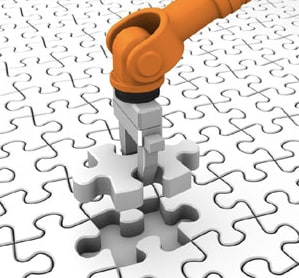 Manufacturing has come a long way since it’s beginning, thanks to automation.
Manufacturing has come a long way since it’s beginning, thanks to automation.
Automation started with Eli Whitney; although famous for inventing the cotton gin, he also perfected interchangeable parts for manufacturing. This was a skill he used when he had to build 10,000 muskets for the U.S. Army in 1799.
In 1910, Henry Ford took the manufacturing process to the next level from previous innovators. He put together people; machines and tools to somehow automate the Model T automobile build process.
Then, we moved into many years later and through robotics and pneumatics for automation, we have the automated manufacturing process we have today.
How has pneumatics changed manufacturing from back in 1799? Take a look at what it gives us and how it improves the overall manufacturing process.
Assembly Lines and Manufacturing Automation
One of the largest areas pneumatics for automation has improved is the assembly line. Without them, assembly lines wouldn’t be nearly as efficient or produce the needed product to meet customer demand. Automation would be nearly non-existent, there would be more dependency on human workers and there would be a higher chance of error in assembly line operations.
One example of these automation marvels is the robotic arm. Controlled by pneumatics and hydraulics, this arm moves in a precise manner and performs repetitive operations that must make it hit the same spot and use the same pressure for tightening bolts or using welding to secure parts together.
Fortunately, we do have pneumatics and this paves the way to improve assembly lines with faster and more precise operations from robotics in assembly lines. With these robotics counterparts in factory assembly lines, operations requiring pinpoint accuracy and sometimes potentially hazardous tasks are done in repetitive cycles, without risk of life, injury or risk of error from human workers.
What Industries Does Automation Help?
One industry that relies heavily on automation on assembly line is the computer industry. A computer assembly line requires precise placement for computer chips into assembled computer systems. Robotics in assembly lines makes this possible and reduces the risk a human worker would pose, if they had to place an exact measured computer chip in a small case.
Another example where pneumatics for automation works is in the automotive industry. Previously, we mentioned the robotic arm and how it makes welding parts together precise and reduces risk. For automotive makers, this is crucial. There is no margin for error when the vehicle you build must transport and protect the passengers inside.
Speed and accuracy are two key factors to successful assembly line operation for many industries, which is why these production lines rely heavily on pneumatics for automation. In fact, without these automation solutions, many businesses wouldn’t have a way to build their products, which require exact measured placement – something human workers are unable to do, on a consistent basis. With this understanding, SMC Pneumatics USA provides the pneumatics for manufacturing automation many industries trust, from the auto industry to electronics and computer hardware manufacturers.
SMC Pneumatics USA, is powered by Orange Coast Pneumatics. Orange Coast Pneumatics (OcAire) is an official, national provider of SMC Pneumatics USA products. SMC offers 11,300 general pneumatics products, with over 560,000 variations, engineered to meet applications in every sector of the market, including pneumatics for automation. If you would like more information on our products and services, please visit us at our Website, Facebook, Twitter, LinkedIn, and Google+.
